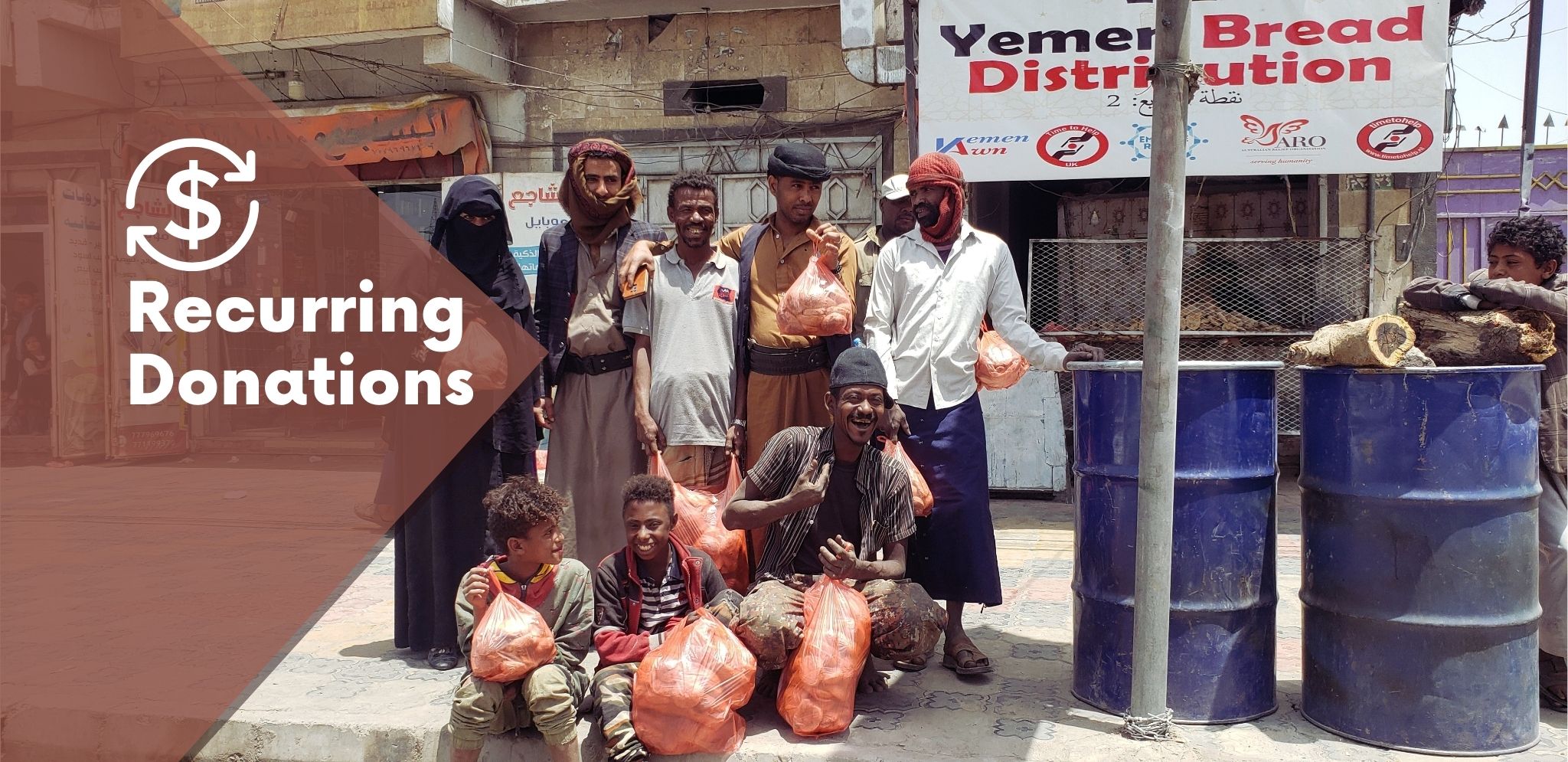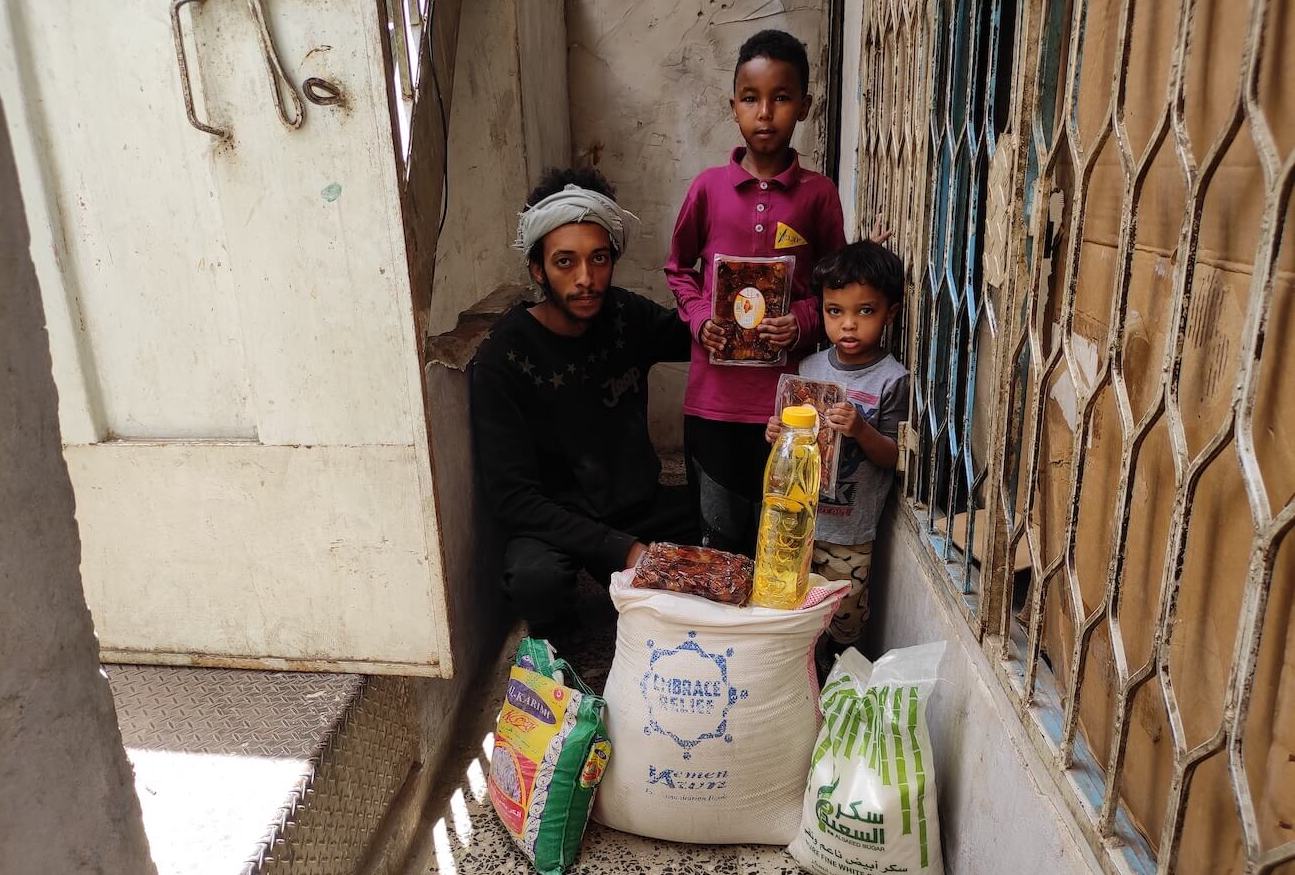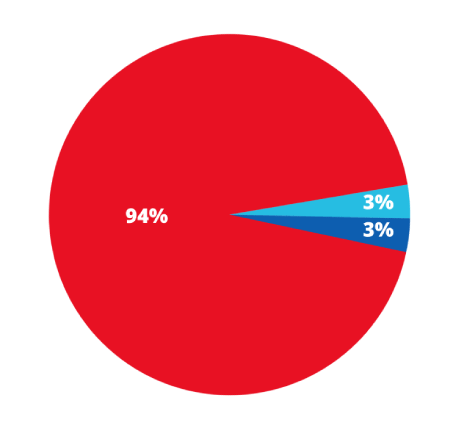Summary
- The country of Yemen boasts a long history, a unique and rich culture, and is located in one of the most important.
- Yemen is also sadly the location of an ongoing, decade-long civil conflict that has devastated millions of people and left many without the basic necessities of life.
- Donate to Embrace Relief’s “Breaking Bread With Yemen” program and help us provide much-needed food to families affected by the country’s ongoing civil conflict.
4 Facts to Know About Yemen
Yemen, located on the southern tip of the Arabian Peninsula, is a country with a rich tapestry of history, culture, and varied geography. Though the country has sadly been in the news recently most prominently due to its ongoing civil conflict, there is much more to understand about this vibrant, unique, and ancient land. Read on to learn more about the fascinating country of Yemen, and then how you can help provide much-needed aid to families suffering due to the conflict.
1. Rich Cultural Heritage
Yemen is a treasure trove of cultural heritage. It is home to some of the oldest civilizations in the world, with historical landmarks that date back thousands of years. The Yemeni culture is a blend of various influences, reflecting its history as a hub for trade and interaction between different civilizations.
One of the most prominent aspects of Yemeni culture is its architecture. The old city of Sana’a, a UNESCO World Heritage site, showcases stunning examples of ancient Yemeni architecture. Most of the existing ancient structures date back to the 7th through 11th centuries, a time period when Sana’a was one of the most important centers of early Islamic learning and activity. The city’s multi-story buildings, adorned with intricate gypsum decorations and stained-glass windows, reflect the ingenuity of Yemeni craftsmanship. Additionally, the historic city of Shibam, known as the “Manhattan of the Desert,” features tall mud-brick buildings that have stood for centuries.
Yemeni cuisine is another cultural gem, characterized by its use of fresh ingredients and bold flavors. Dishes like mandi (a spiced rice and meat dish) and saltah (a stew made with meat, vegetables, and fenugreek) are staples in Yemeni households. The traditional Yemeni coffee, brewed from locally grown beans, is renowned for its rich flavor and aromatic profile.
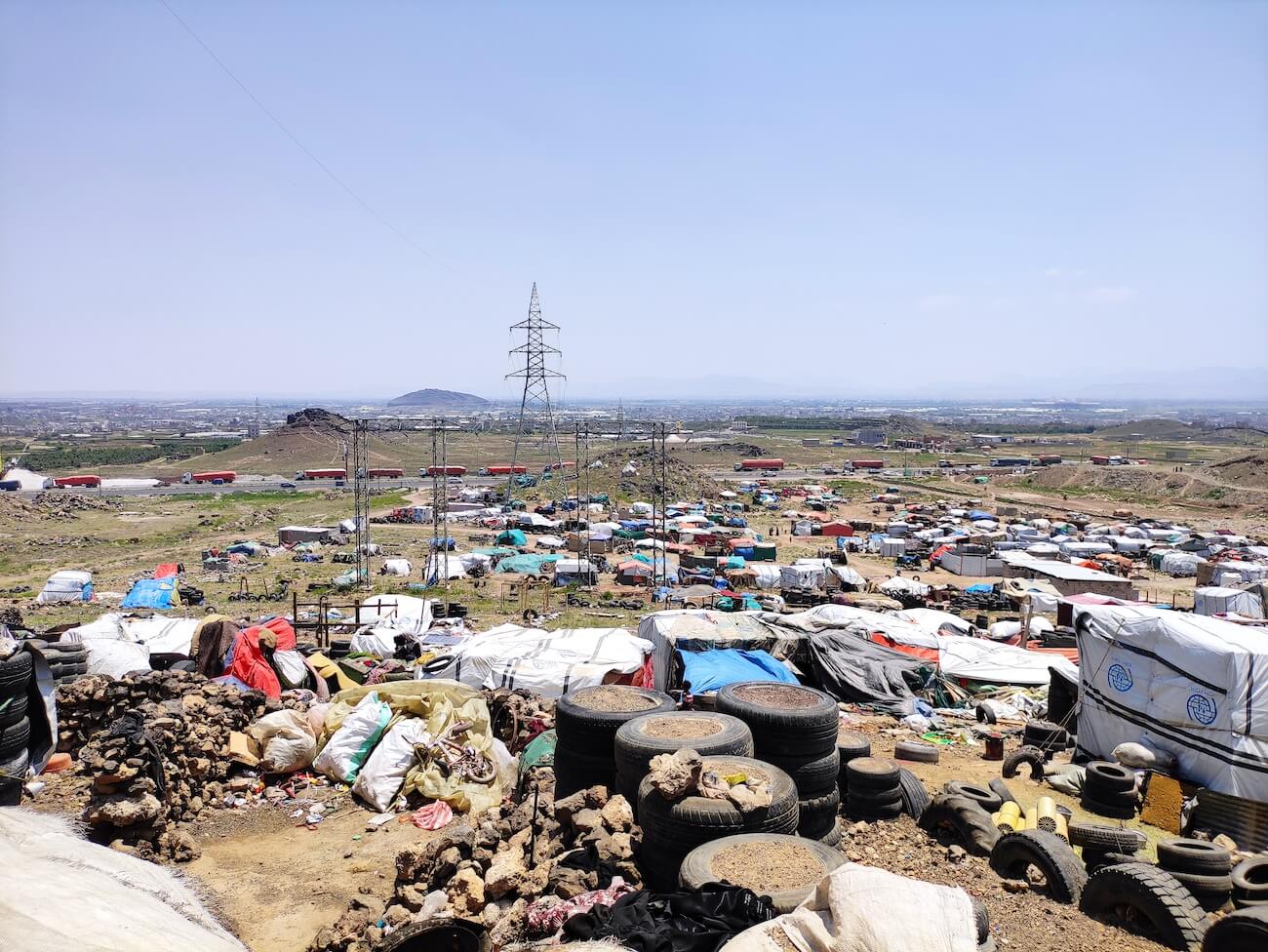
2. Diverse and Dramatic Geography
Yemen’s geography is as diverse as its culture. The country boasts a wide range of landscapes, from the arid deserts of the Rub al-Khali (Empty Quarter) to the lush highlands and the scenic coastlines along the Red Sea and the Arabian Sea.
The Yemeni highlands are particularly noteworthy, characterized by terraced fields that climb the steep mountainsides. These terraces, some of which date back over 2,000 years, are a testament to the ingenuity of Yemeni farmers who have cultivated these challenging landscapes for centuries. The highlands also host numerous villages and towns that offer breathtaking views and a glimpse into traditional Yemeni life.
In stark contrast to the highlands, the coastal plains of Yemen feature pristine beaches and rich marine biodiversity. Perhaps the most celebrated geographic location in Yemen is the Socotra Archipelago, a group of four islands off the southeast coast. Socotra is home to hundreds of species of flora and fauna found nowhere else on Earth, making it a paradise for nature enthusiasts. The islands are perhaps best known for their dragon trees, whose distinctive umbrella shape is instantly recognizable.
3. A Long, Complex History
Yemen’s location at the junction of the Red Sea, the Horn of Africa, and the Indian Ocean has made it a vital stop on trade routes for centuries, leading to high levels of wealth and power for the various civilizations who have called the land home.
The ancient kingdoms of Saba and Himyar and Hadhramaut were among the most powerful in the region, known for their advancements in agriculture, trade, and architecture.
The Sabaean Kingdom (1200 BC to 275 AD), famously associated with the Queen of Sheba, played a significant role in the incense trade, linking the Arabian Peninsula with Africa and the Indian subcontinent. The ruins of Marib, the ancient capital of Saba, still stand today, offering a glimpse into Yemen’s illustrious past.
Following the Sabaeans came the Himyarites, who became known for their advancements in agriculture, trade and architecture. Himyarite rulers initially worshipped the Arabian pantheon of gods before converting to Judaism in the fourth century AD, and then to Christianity in the sixth century.
With the coming of Islam to the Arabian peninsula in the 620s and 630s, Yemen’s geographic proximity to the holy cities of Mecca and Medina – and its role as a major trading post connecting the vast Indian Ocean – made the land one of the key areas for the spread of Islam into Africa, Asia, and the Indian subcontinent. It is said that the Prophet Muhammad himself commissioned the building of the Great Mosque of Sana’a, one of the first mosques in the Muslim world, and one that remains a significant religious site.
4. Modern conflict and how you can help the people of Yemen
Since 2014, Yemen has been embroiled in a devastating civil conflict that has severely impacted the country and its people. This conflict has resulted in significant loss of life, displacement of millions, and a critical shortage of basic necessities such as food, clean water, and medical supplies. For much of the decade-long content, international organizations have described the situation in Yemen as one of the worst humanitarian crises in the world.
Despite the challenges, there are ongoing efforts by the international community to bring about peace and stability in Yemen. Negotiations and ceasefires have been attempted, though a lasting resolution remains elusive as of mid-2024. The resilience and spirit of the Yemeni people continue to shine through, even in the face of such adversity, a testament to the country’s remarkable culture, history, and tradition.
Similarly, there are many international aid organizations working diligently to provide the people of Yemen with the basic necessities, like bread, that they need to survive this ongoing ordeal.
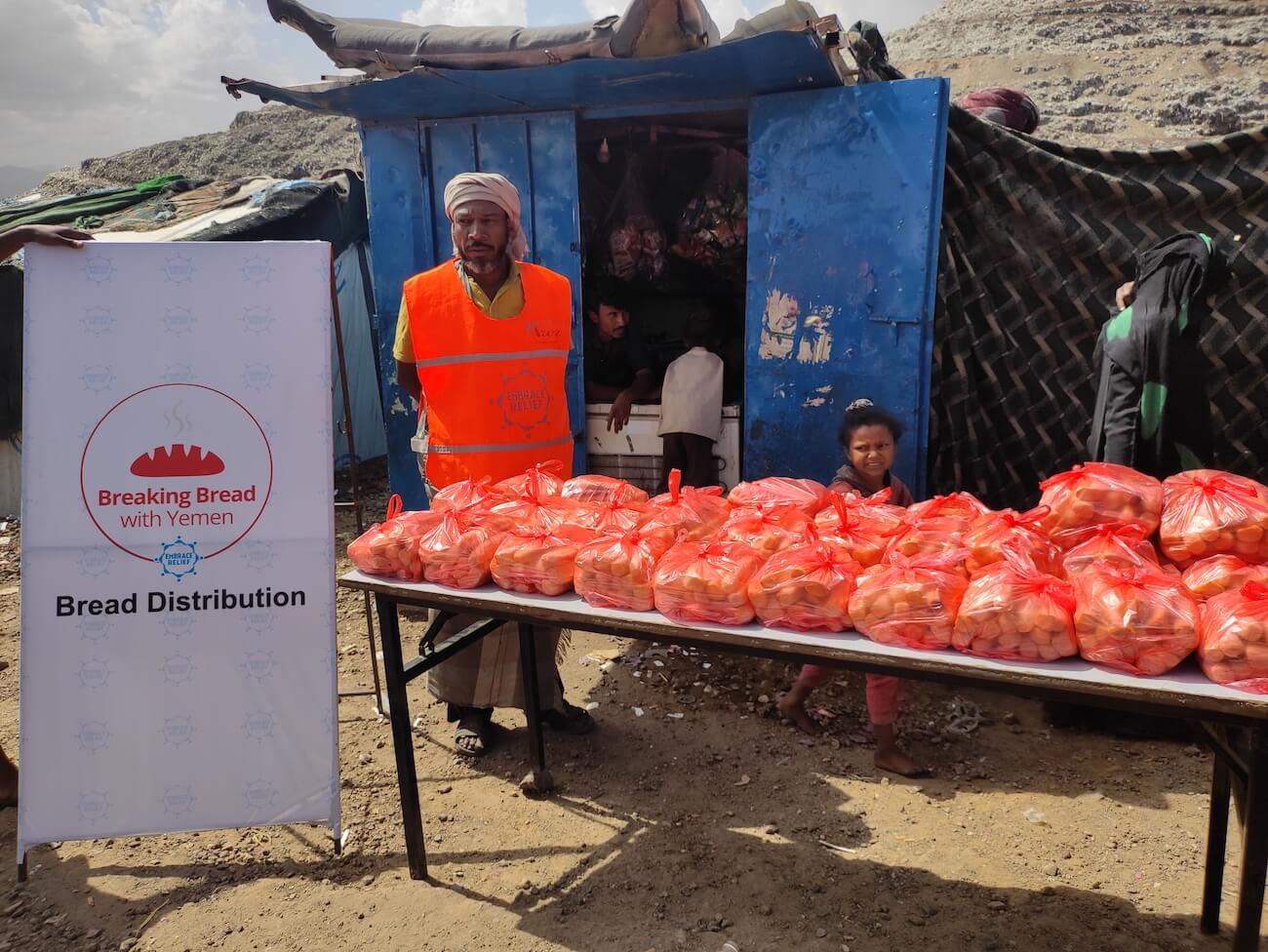
Breaking bread with the people of Yemen
Embrace Relief is one such organization aiming to support the people of Yemen. Our “Breaking Bread With Yemen” program, in operation since 2021, has provided life-saving daily loaves of bread to hundreds of thousands of families in need. For many families who are living below the poverty line, or for those who have been displaced from their homes and forced to survive living in one of the country’s refugee camps, this program represents a critical lifeline.
Currently, the program is seeking to provide a daily bread distribution for all 50 families in the Al-Azrageen camp in Sana’a. But we can’t help these vulnerable families without your help.
A gift of just $50 will ensure that one family has enough bread to eat for one full month. Donate to Embrace Relief’s “Breaking Bread With Yemen” program using the donation box below, and help us give life-saving bread – and hope – to a family in need today!
